THE AUTO MARKET Importance of Automotive varies between TPEs Interiors Multi-material Molding Example Multi-material (2-shot) Door Trim Panel Key TPE Challenge: NOTES: Environment Performance Cost Weight
- 40-50% of current TPE demand
- Key incumbents: EPDM, PVC, TPO
- Global footprint
- Role for lightweighting, systems cost-save
- Key target properties: low V.O.C., thin wall, low odor, oil/fuel resistance, heat resistance, sustainable
- Role for process technology, co-processing innovations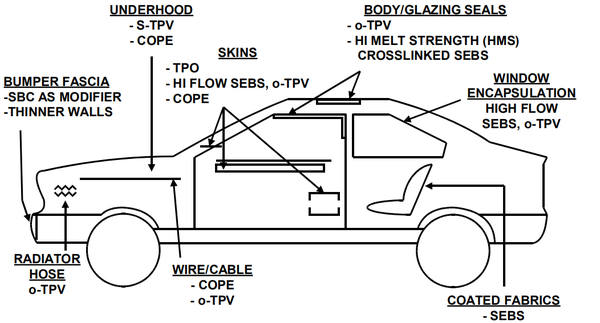
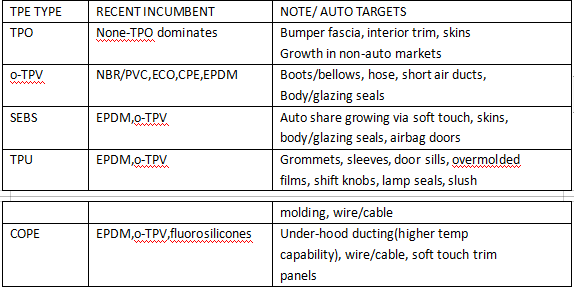
Competition In Interior Soft Trim/Soft Touch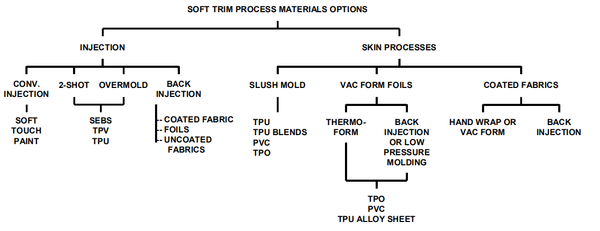
• Cost save vs. incumbent skins methods
• TPVs and SBC-TPEs (TPE-S) competing
• Foaming will accelerate penetration
• Capital investment vs. labor costs (an issue in Asia)
• TPEs with high flow (large area/thin cross-section) required
• Craftsmanship improvement
• Recyclability
• Multi-color capabilities
Door Trim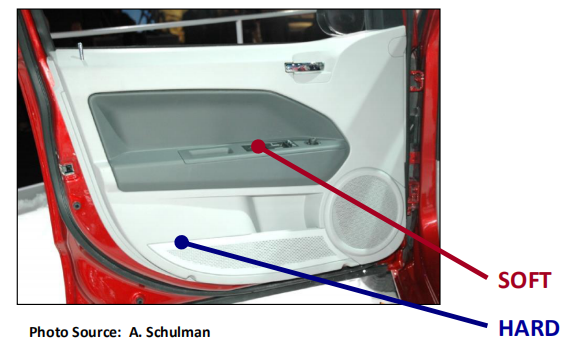
• Application: Door trim (dark areas)
• TPE Supplier: A. Schulman
• TPE Type: o-TPV
• OEM: Chrysler
• Vehicles: Caliber, Commander, Grand Caravan
TPE Benefits:
• Haptics soft (luxury) touch
• Enhanced craftsmanship/multi-color capability
• Single step process/labor cost savings
• Cost save vs. multi-step approach
• Multi-material molding cycle time approaching single shot
TPE Skin Candidates: SEBS (TPE-S), o-TPV, TPU modified TPE (for use over PC/ABS)
• Adequate flow (large area/thin cross-section (1-2 mm)
• Capital investment required
• Ability to incorporate foam
• Competition with textile inserts
Incumbents: Thermoformed/backfoam PVC or TPO sheet, PU spray (declining)
Candidate Material/Process Combinations For IP Skins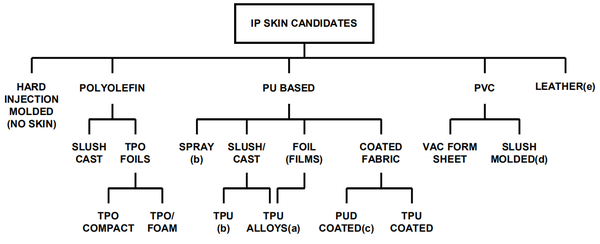
(a) TPE/TPU alloys (TPU/SEBS, TPU/TPO, TPU/TPV)
(b) e.g., from Recticel, in use on some high end vehicles (e.g., at BMW)
(c) PUD = polyurethane dispersion
(d) Widely used globally
(e) Limited use on very high end vehicles (e.g., some Mercedes models use leather wrap/adhesive/PVC sheet/adhesive)
IP Skin PVC Substitution Objectives
• Halogen free
• Improve recyclability
• Reduce VOC/fog
• Satisfactory hidden passenger airbag deployment at -30ºC
• Grain reproduction
• Haptics
• Craftsmanship/fit & finish (shrinkage on heat aging effects)
• Mass reduction
• Long-term UV resistance (low ∆E)
• Heat aging resistance
• Reduce IP system costs
• Reduce skin costs
• Maintain current labor requirements
• Reduce part/car weight
